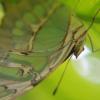Hi all,
I'm Buster, hailing from the United Kingdom of Great Britain. Really glad to be here, and stoked that I'm finally making a return to Myrmecology after all these years.
I'm in the process of building two new Ytong nests for the colonies I currently have. One is a Messor Barbarus colony containing a queen and roughly 35 workers. The other is a Myrmica Rubra colony consisting of 3 queens and 40 or so worker.
I'm fairly confident in the design process that I'll be adopting and have the required basics including the ytong blocks, dremel tool with assorted heads, two small aquariums (30 X 20 X 20 and 25 X 15 X 15 respecitvely), grout to accept a layer of sand for the outworld and a range of other items.
The questions I have are as follows;
1)As I'll be placing the ytong nests directly into the aquariums I was wondering if I would be best served sealing the edges of the nest to the glass of the aquarium using silicone to prevent the slight possibility of small gaps between the ytong and the glass, into which my ants may filter. Is this something anyone would recommend? Or will I be ok to just place the nest into the aquarium flush against the glass? Hope that makes sense.
2) I'm very keen to get the humidity right with these two species. I know the Messor Barbarus, whilst still needing a moisture gradient, prefer dryer conditions to the Myrmica, who are of course a moisture loving species. Would it be a good idea to purchase a small digital hygrometer/thermometer (with probe) and build the probe into my design? And would something like this cheap digital piece of kit suffice - http://www.ebay.co.u...vwAAMXQUmFSkJBP
3) Again, regarding moisture what would be the best approach to hydrating these nests? I was thinking about making a resevoir close to one end of the nest, which would run closely behind the nest chambers/tunnels at that end. This would be accessible from the surface (and covered with a carved stone plug to hide it). I would fill this with sponge that has been cut to shape and add water to this, adjusting accordingly until perfected. Would this be ok, or am I going to be better off using another method? If so any suggestions you could offer would be brilliant, thanks.
4) This one is probably more of a preferential thing, individual to each ant keeper but, do you prefer a horizontal format where your ants leave to forage via a hole in the side of the nest, or a vertical nest structure where the ants leave via a hole that leads upwards into the foraging area? I know in the wild a vertial nest with a surface exit/entrance may be more normal to encounter but if people have found side entrance/exits better (perhaps with the hole at the bottom of the nest as seen with the Tar Heel Ant fortress and stronghold nests) then I would really be keen to know.
5) Last but not least, has anyone got any knowledge on the growth rates for Messor Barbarus and Myrmica Rubra taking into a consideration a plentiful supply of protein for the developing brood and all other conditions being optimal, or as optimal as can be.
Hope I've not asked too much there but I'm really keen to get it as right as I possibly can and knowledge is power after all I guess. The idea is that I'll keep them in these nests until they're ready to move into a much larger nest by which time I would have already built new ones. I'll also be adding Lasius Niger to my collection in a couple of months if all goes well.
Hope you're all well and must say, I love this forum. Been following it for a while now and it has really been the driving factor in my wanting to get back into myrmecology.
Sorry for an extremely long post, I really hope someone will have the patience to look through it all. I appreciate any advice I can get.
Thanks guys and girls.
Buster.
Edited by Buster81, May 28 2017 - 5:26 PM.
















